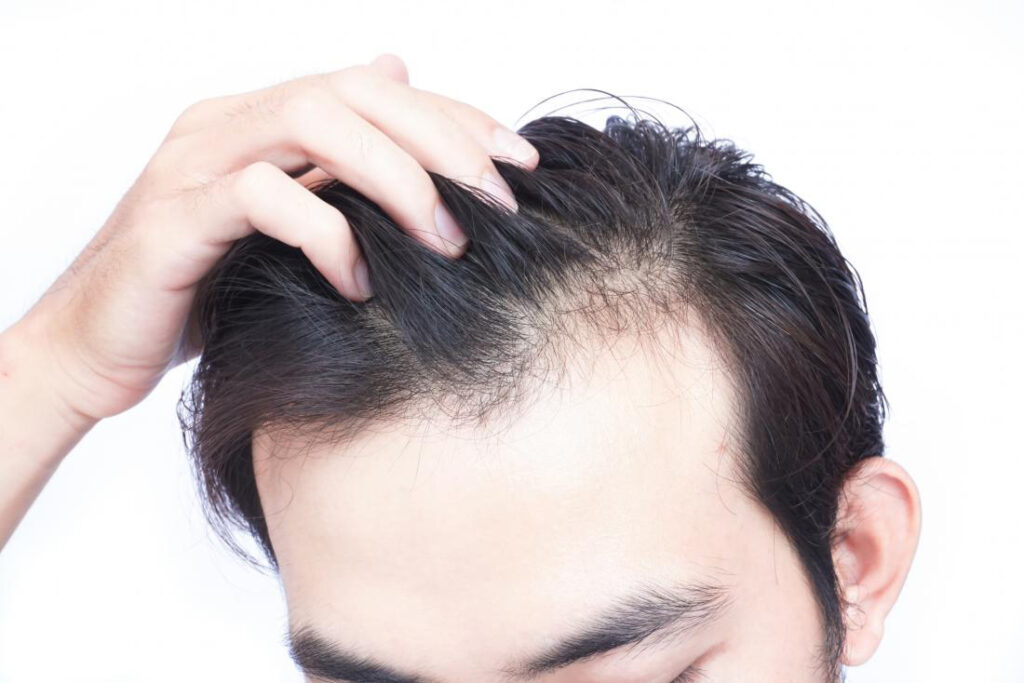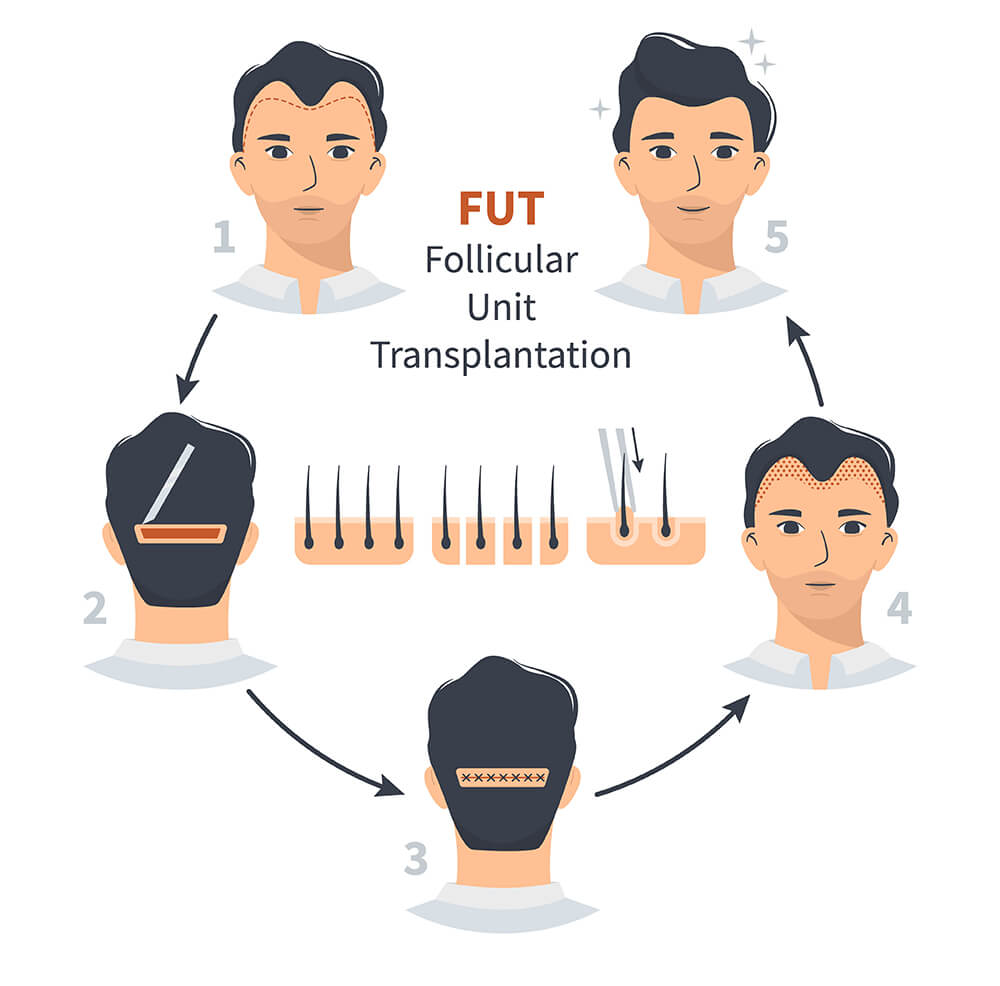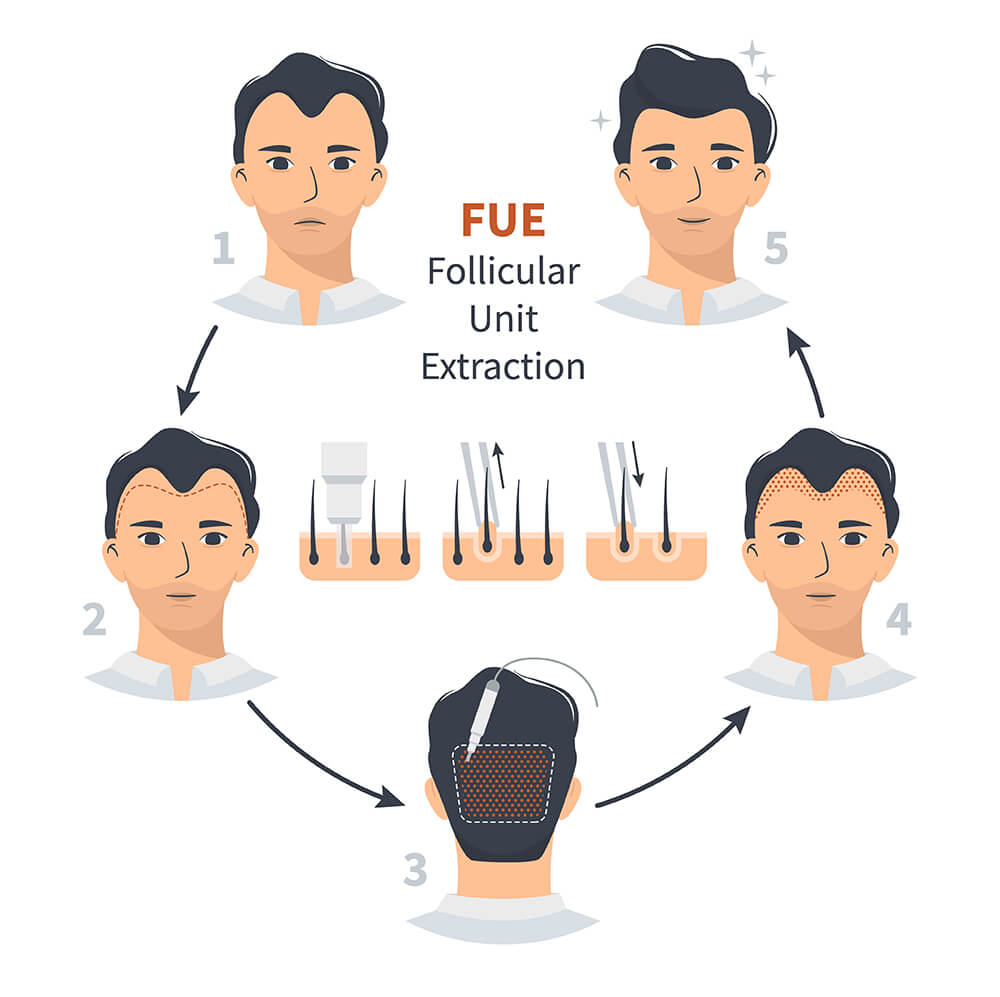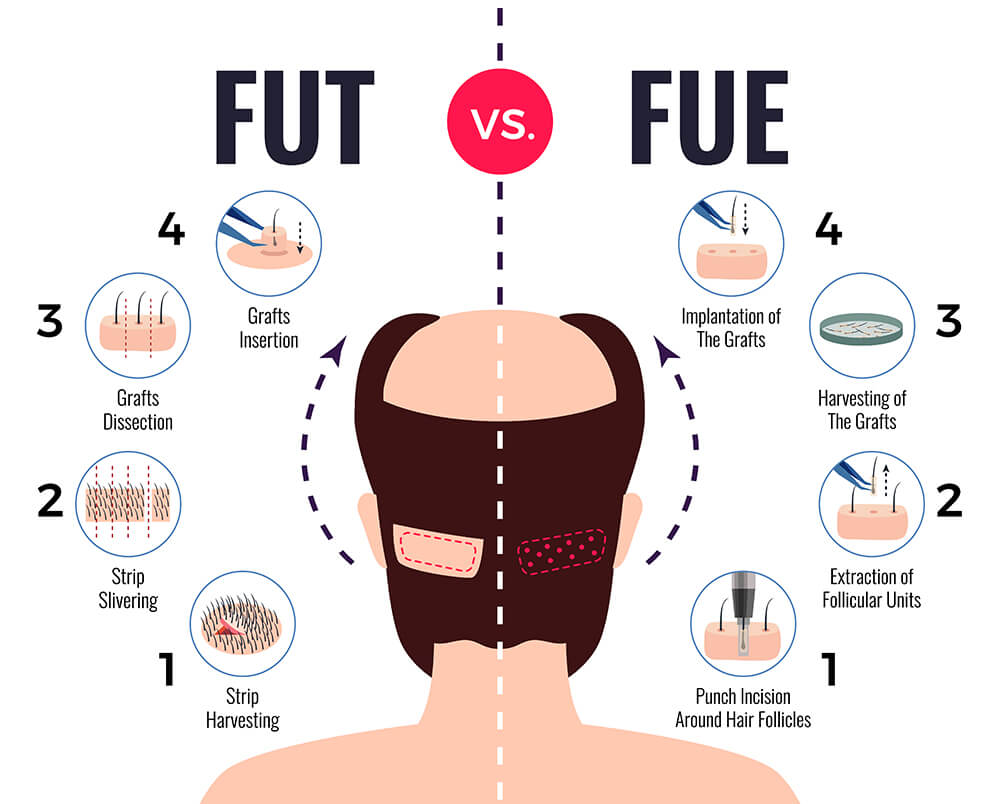Hair Loss Treatment

Hair Loss Treatment
Hair loss can be the result of heredity, hormonal changes, medical conditions or medications. Anyone can experience hair loss, but it’s more common in men.
Baldness typically refers to excessive hair loss from your scalp. Hereditary hair loss with age is the most common cause of baldness. Some people prefer to let their hair loss run its course untreated and unhidden. Others may cover it up with hairstyles, makeup, hats or scarves. And still others choose one of the treatments available to prevent further hair loss and to restore growth.
Hair transplants are done to add more hair to an area on your head that may be thinning or balding. It’s done by taking hair from thicker parts of the scalp, or other parts of the body, and grafting it to the thinning or balding section of the scalp.
Gradual thinning on top of head. This is the most common type of hair loss, affecting both men and women as they age. In men, hair often begins to recede from the forehead in a line that resembles the letter M. Women typically retain the hairline on the forehead but have a broadening of the part in their hair.
The most common cause of hair loss is a hereditary condition called male-pattern baldness or female-pattern baldness.
Treatment

Effective treatments for some types of hair loss are available. You might be able to reverse hair loss, or at least slow further thinning. With some conditions, such as patchy hair loss (alopecia areata), hair may regrow without treatment within a year.
Treatments for hair loss include medications, surgery to promote hair growth and slow hair loss.

Medication
If your hair loss is caused by an underlying disease, treatment for that disease will be necessary. This may include drugs to reduce inflammation and suppress your immune system, such as prednisone. If a certain medication is causing the hair loss, your doctor may advise you to stop using it for at least three months.
Medications are available to treat pattern (hereditary) baldness. Options include:
- This is an over-the-counter (nonprescription) medication approved for men and women. It comes as a liquid or foam that you rub into your scalp daily. Wash your hands after application. At first it may cause you to shed hair. New hair may be shorter and thinner than previous hair. At least six months of treatment is required to prevent further hair loss and to start hair regrowth. You need to keep applying the medication to retain benefits.
Possible side effects include scalp irritation, unwanted hair growth on the adjacent skin of the face and hands, and rapid heart rate (tachycardia).
- This is a prescription drug approved for men. You take it daily as a pill. Many men taking finasteride experience a slowing of hair loss, and some may show some new hair growth. You need to keep taking it to retain benefits. Finasteride may not work as well for men over 60.
Rare side effects of finasteride include diminished sex drive and sexual function and an increased risk of prostate cancer. Women who are or may be pregnant need to avoid touching crushed or broken tablets.
Hair Transplant Surgery
Simply put, a hair transplant takes hair you have and transfers it to an area where you don’t have hair. It’s typically taken from the back of your head, but can also be taken from other parts of your body.
Before starting a transplant, your surgeon sterilizes the area where the hair will be removed and numbs it with a local anesthetic. You can also request sedation in order to stay asleep for the procedure.
Your surgeon then performs one of two transplant methods: FUT or FUE.
Follicular Unit Transplantation (FUT)
FUT is sometimes known as follicular unit strip surgery (FUSS). To perform a FUT procedure, your surgeon follows these steps:
- Using a scalpel, the surgeon removes a piece of your scalp, usually from the back of your head. The strip size is typically about 6 to 10 inches long but can stretch from ear to ear.
- They close the area where the scalp was removed with stitches.
- Your surgeon and their assistants separate the scalp strip into smaller pieces with a scalpel. They may split the piece up into as many as 2,000 smaller fragments, called grafts. Some of these grafts may contain only one hair each.
- Using a needle or blade, the surgeon makes small holes in your scalp where hair will be transplanted.
- The surgeon inserts hairs from the removed piece of scalp into the puncture holes. This step is called grafting.
- They then cover the surgical sites with bandages or gauze.
The specific number of grafts you receive depends on the:
- type of hair you have
- size of transplant site
- quality (including thickness) of hair
- hair color

Follicular Unit Extraction (FUE)
To perform a FUE procedure, your surgeon takes these steps:
- They shave off hair on the back of your head.
- The surgeon then takes individual follicles out of the scalp skin. You’ll see tiny marks where each follicle was removed.
- As with the FUT procedure, the surgeon makes small holes in your scalp and grafts hair follicles into the holes.
- They then cover the surgical site with bandages or gauze.
FUT and FUE may each take several hours to several days to complete. In part, this depends on the amount of work performed by the surgeon. You will go home the same day of the procedure.
Once the surgery is done, your surgeon carefully removes any bandages. The area may be swollen, so your surgeon might inject triamcinolone into the area to keep the swelling down.
You’ll likely feel pain or soreness at the transplant site as well as in the area where hair was taken from. For the next few days, your surgeon may prescribe:
- pain medications, such as ibuprufen
- antibiotics to prevent infections
- such as an oral steroid, to relieve swelling
- medications such as finasteride(Propecia) or minoxidil (Rogaine) to help stimulate hair growth
Here are some aftercare tips for hair transplant surgery:
- Wait a few days after the surgery to wash your hair. Only use mild shampoos for the first few weeks.
- You should be able to return to work or normal activities in about 3 days.
- Don’t press a brush or comb down over the new grafts for about 3 weeks.
- Don’t wear any hats or pullover shirts and jackets until your doctor say it’s OK.
- Don’t exercise for about a week.
Don’t worry if some hairs fall out. This is part of the process. Transplanted hair may not grow much or seamlessly match the hair around it for a few months.
The most common side effect is scarring, and this cannot be avoided with any procedure.
Other potential side effects include:
- infections
- crust or pus drainage around the surgical sites
- scalp pain, itching, and swelling
- inflammation of hair follicles (folliculitis)
- bleeding
- losing sensation around the surgical sites
- visible areas of hair that don’t match the surrounding hair or are noticeably thinner
- continuing to lose hair if your hair is still balding
Minoxidil and Propecia can also have side effects, such as:
- irritated scalp
- dizziness
- chest pain
- headaches
- irregular heart rate
- hand, foot, or breast swelling
- sexual dysfunction